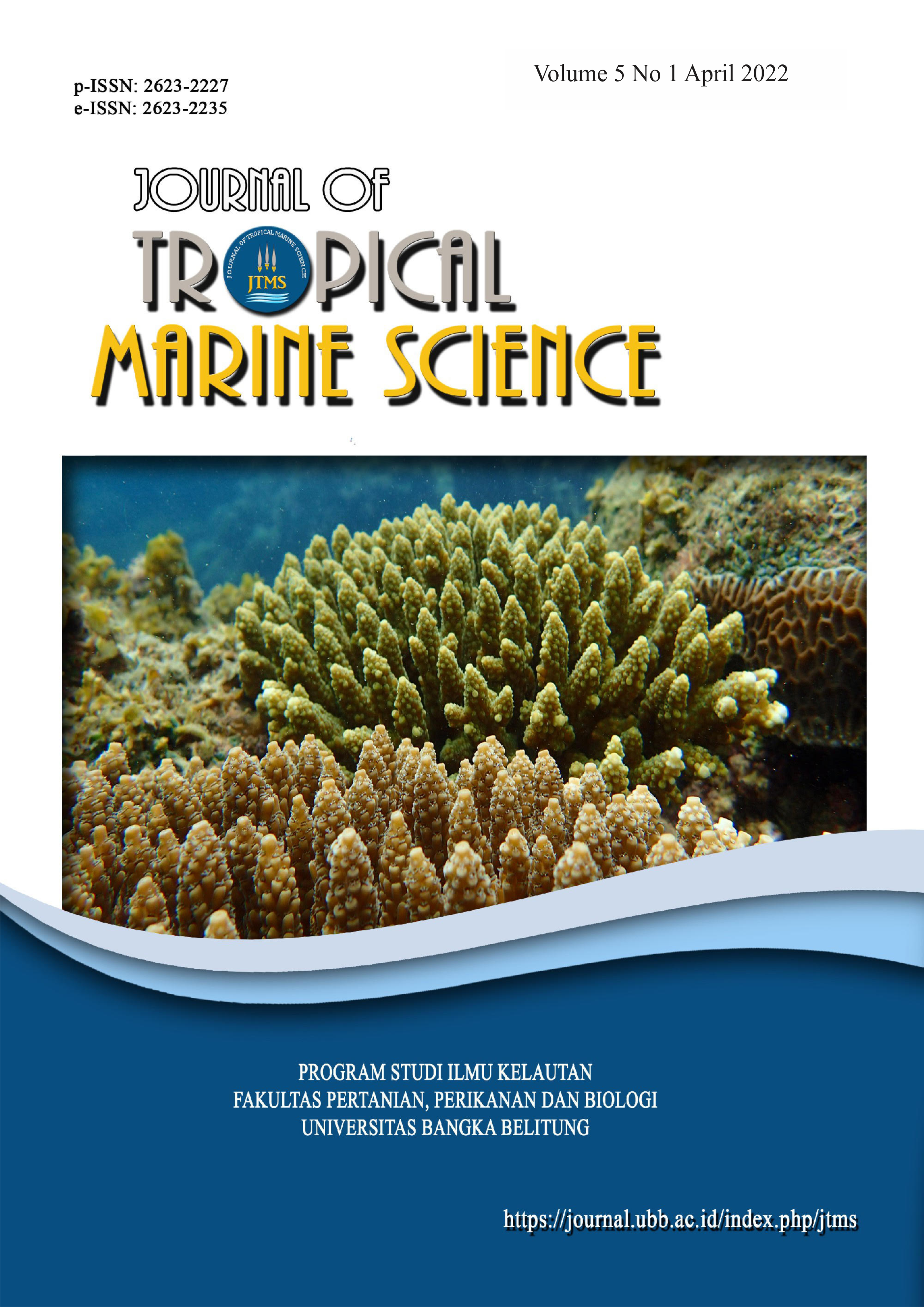Biodiversitas Makrobentos Sebagai Indikator Kualitas Habitat Pada Ekosistem Mangrove
DOI:
https://doi.org/10.33019/jour.trop.mar.sci.v5i1.2940Keywords:
Abundance, Diversity, Mangrove, MacrobenthosAbstract
Macrobenthos is one of the organisms that play an essential role in the decomposition process of mangrove plant litter. Other organisms then use the result of the decomposition process in mangrove forests. Still, the existence of these organisms is susceptible to environmental changes, so it is often interpreted as one of the indicators of habitat quality. This research aims to determine the sustainability and diversity of macrobenthos as an indicator of habitat quality in mangrove forests. Data collection is carried out by the plot cluster method. Sample deflating points using purposive sampling. Cluster plots are placed on three observation stations with different conditions, namely natural mangrove forests (station 1), former pond areas (station 2), and areas adjacent to agricultural land (station 3). Each station has three plots measuring 10 x 10 meters to record tree level mangrove vegetation. Each plot has five subplots measuring 1 x 1 meter to take macrobenthos samples. The total number of plots is nine plots for mangrove vegetation and 45 subplots for macrobenthos. The results showed that macrobenthos ability ranged from 10 individuals / m2 to 15 individuals / m2, with the diversity index ranging from 1.49 to 1.73. This condition illustrates that mangrove habitat is included in the medium classification in other words, based on the state of the structure of the biota Bentos community in the mangrove forest in Siantan District, Mempawah regency is fairly a stable category.Downloads
Download data is not yet available.
Downloads
Published
2022-05-02
Issue
Section
Articles



